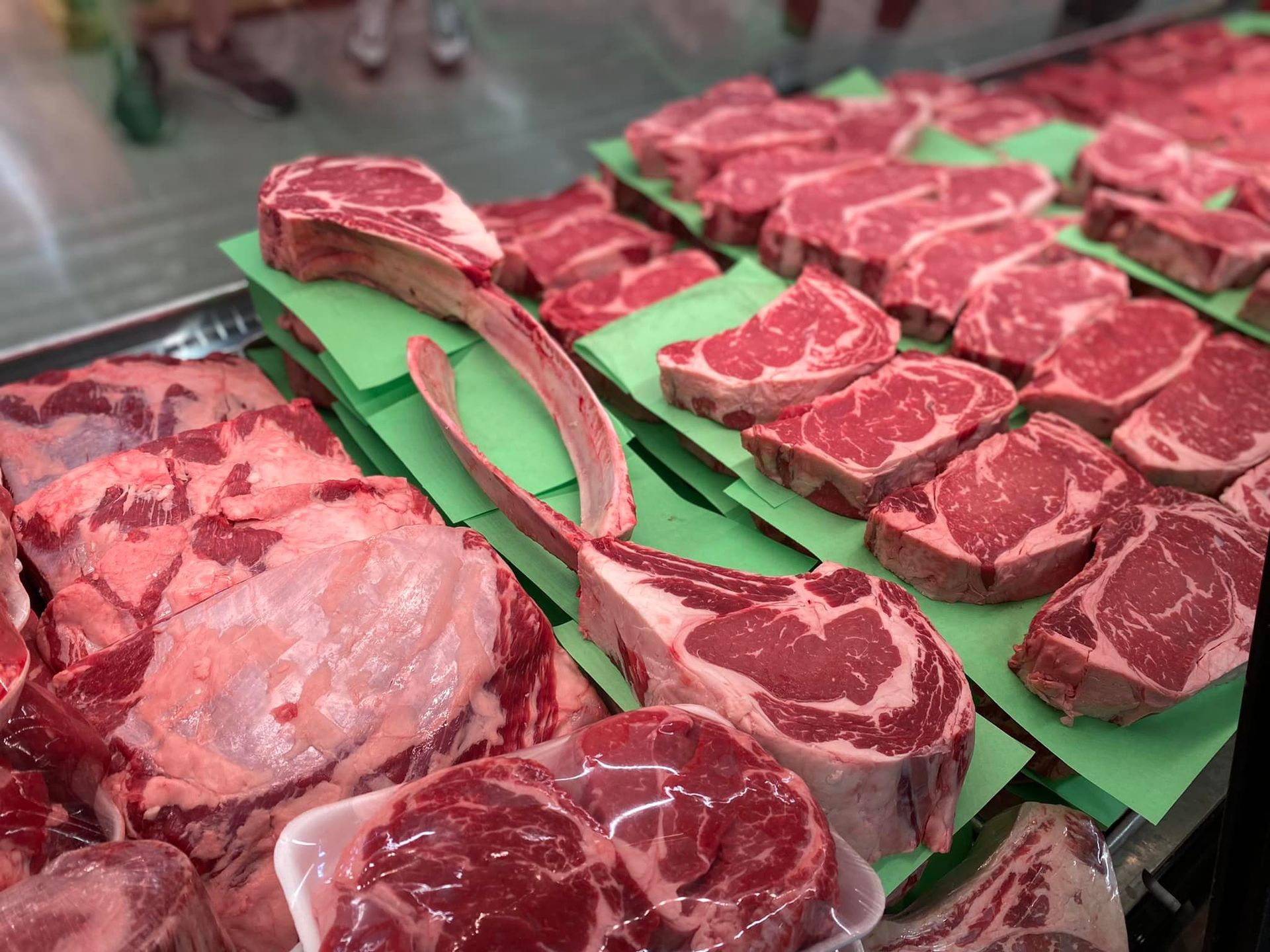Check Out Bagley Farms Meat Market Edwardsville IL for Farm-Fresh Meat and Specialized Cuts
Check Out Bagley Farms Meat Market Edwardsville IL for Farm-Fresh Meat and Specialized Cuts
Blog Article
Reveal the Art of the Butcher's Cut in a Modern Meat Market
In the ever-evolving landscape of modern meat markets, the butcher's cut has actually transcended its conventional origins, merging olden craftsmanship with contemporary techniques. What really establishes the modern-day butcher apart is their capacity to build a deeper link between customers and the beginnings of their meat.
Development of Butchery Strategies

The mid-20th century saw butchery methods even more refined by clinical understandings into muscle biology and meat aging, boosting both inflammation and taste. Developments like vacuum product packaging and refrigeration prolonged product shelf-life, permitting butchers to expand offerings and enhance quality assurance. This duration likewise marked the surge of specific equipment, such as band saws and meat slicers, which raised accuracy and efficiency in meat handling.
Electronic systems currently help in monitoring animal provenance and enhancing cuts to fulfill particular client choices. Furthermore, a rebirth in artisanal butchery has emerged, mixing traditional skills with modern-day knowledge to cater to customers looking for ethical and sustainable meat options.

Recognizing Meat Cuts

Recognizing the ins and outs of meat cuts is essential for both butchers and customers looking for high quality and value. Each cut comes from a different component of the pet, giving distinct flavors, appearances, and food preparation techniques. Mastery of these distinctions not only enhances cooking experiences however also makes the most of the energy of each carcass. For butchers, exact cuts show ability and regard for the craft, guaranteeing marginal waste and ideal yield.
The key categories of meat cuts consist of primal, sub-primal, and retail cuts. Butchers then damage these down further into sub-primal cuts, prior to finally creating retail cuts readily available to consumers, like ribeye or tenderloin.
Comprehending muscle composition is vital; muscles utilized extra frequently by the animal have a tendency to be harder and are best matched for sluggish food preparation methods, while less-used muscles, like those discovered in the loin, are extra tender and ideal for grilling or roasting. Experience with these differences encourages customers to make informed choices, improving their culinary undertakings.
Selecting High Quality Meat
Picking the ideal meat involves even more than just picking an aesthetically attractive item from the display. The art of picking high quality meat requires a critical eye and understanding of particular attributes that symbolize freshness and quality.
Secondly, take into consideration the marbling, which describes the white flecks of fat within the muscular tissue. Appropriate marbling is a vital sign of tenderness and taste, as it thaws during food preparation, improving the meat's juiciness. Remember, higher marbling often associates with premium high quality cuts, such as USDA Prime.
Texture is one more crucial variable; meat ought to really feel firm to the touch, not slimed or overly soft. Furthermore, bear in mind the fragrance. Fresh meat needs to have a clean, neutral scent, without any kind of sour or off-putting odors.
Coupling Cuts With Cooking Approaches
Successfully matching cuts of meat with the ideal food preparation methods is necessary for achieving ideal taste and appearance. Different cuts vary in inflammation, marbling, and connective cells web content, each requiring certain strategies to open their potential. For instance, tender cuts like filet mignon and ribeye, with their integral marbling, advantage from high-heat, quick-cooking methods such as barbecuing or her explanation pan-searing. These methods enhance the meat's natural flavors and make sure a juicy coating.
On the other hand, harder cuts like brisket and chuck roast are rich in collagen, which breaks down into gelatin when cooked slowly. These cuts are optimal for braising or sluggish roasting, enabling the meat to tenderize check it out in time and establish deep, complicated flavors. Similarly, cuts such as short ribs and pork shoulder prosper with slow-cooking methods, where extended cooking times transform their robust structures into succulent meals.
Lamb shanks and oxtail, which need prolonged food preparation to soften, are ideal candidates for cooking or sluggish simmering. These methods coax out abundant, passionate flavors while keeping wetness. By comprehending the unique characteristics of each cut, cooks and home cooks alike can elevate their cooking productions, making sure each meal is both pleasing and unforgettable.
The Butcher's Role Today
Navigating the advancing landscape of the modern meat market, the butcher's function today extends beyond plain preparation of cuts. Contemporary butchers are culinary craftsmens, educators, and advocates for lasting practices.
Along with crafting specific cuts, butchers now involve straight with customers, using cooking advice and tailoring choices to match individual requirements and choices. Their know-how in meat aging, marbling, and discover this flavor profiles equips customers to make enlightened decisions, improving their cooking experiences. This tailored service exemplifies the butcher's progressing duty as a relied on advisor in the kitchen area.
Additionally, butchers are crucial in decreasing waste, utilizing whole animals to produce varied items such as sausages and supplies - bagley farms meat market edwardsville il. This thorough approach not only respects the animal but likewise lines up with contemporary sustainability goals. By doing this, the modern-day butcher personifies both practice and technology, adjusting to an ever-changing market while maintaining the artistry and honesty of their craft

Verdict
The modern butcher's craft intricately weaves traditional strategies with contemporary developments, stressing lasting practices and moral sourcing. Mastery in recognizing diverse meat cuts and top quality signs encourages butchers to supply informed suggestions, aligning details cuts with optimal food preparation methods. This expertise not only boosts culinary experiences yet also reinforces the connection in between customers and the origins of their food. By recognizing historical methods while welcoming contemporary needs, the butcher's duty stays essential in today's sophisticated meat market.
Report this page